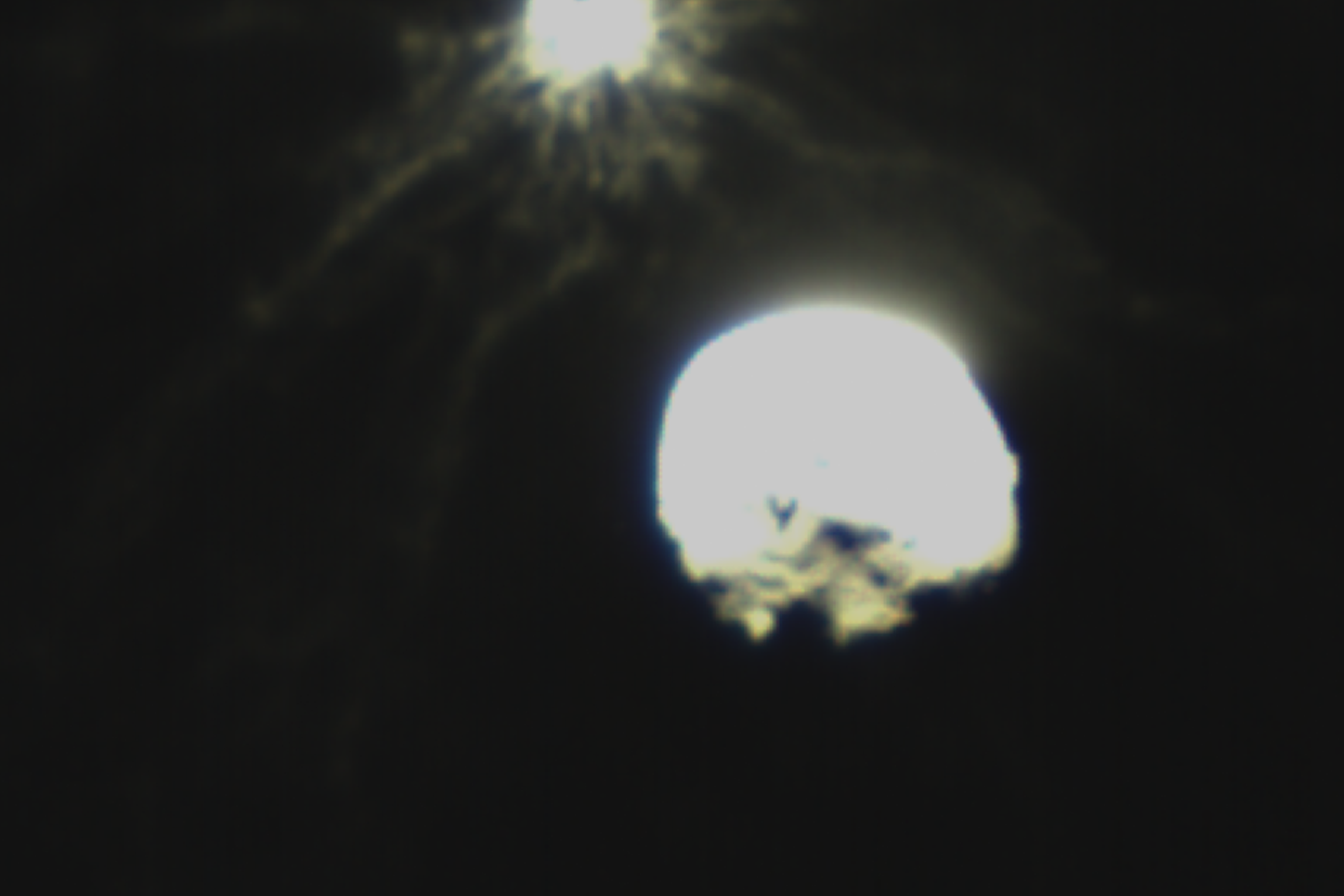
Telescopes in space and across Earth captured the spectacular aftermath of NASA’s DART spacecraft crashing into the asteroid Dimorphos on 26 September. The smash-up was “the first human experiment to deflect a celestial body”, says Thomas Zurbuchen, NASA’s associate administrator for science, and “an enormous success”.
“We’re all pretty stoked here,” says Andy Rivkin, a planetary scientist at the Johns Hopkins University Applied Physics Laboratory in Laurel, Maryland, who works on the mission.
A ringside view came from LICIACube, a tiny Italian spacecraft that flew along with DART and photographed the impact, which took place 11 million kilometres from Earth. LICIACube’s first images, released by the Italian Space Agency on 27 September, show a large fireworks-like plume coming off Dimorphos after DART had ploughed into it. The cloud of rocks and other debris expanded quickly, like a giant puff of smoke.
Studying the plume’s evolution will shed light on the physical properties of Dimorphos, Elisabetta Dotto, LICIACube’s science team lead at the National Institute for Astrophysics in Rome, said at a press briefing. By analysing how the plume formed and dispersed, researchers can calculate how much of DART’s kinetic energy went into ejecting debris from Dimorphos, and how much might have gone into altering the asteroid’s orbit—the goal of the mission.
This sped-up video showcases the final five minutes of imagery relayed to Earth by the DART spacecraft as it flew past the asteroid Didymos to impact Didymos’s moonlet, the smaller asteroid Dimorphos. Credit: NASA/Johns Hopkins APL
The spacecraft itself is finished. “A lot of it is pulverized, and some of it is melted,” says Megan Bruck Syal, a physicist at the Lawrence Livermore National Laboratory in California. “It’s hard to say, but I don’t think there will be large chunks left.”
LICIACube, which is Italy’s first deep-space mission, used an autonomous guiding technique to keep its cameras locked on Dimorphos as it whizzed past in the aftermath of the DART crash, just 55 kilometres from the asteroid. It used two cameras—a black-and-white one named LEIA and a three-colour one named LUKE—to photograph Dimorphos before and after the crash. The pictures show a dramatic brightening at the time of impact, then the plume expanding and drifting outwards in the minutes that followed. The intricate structures in the debris plume—almost “spidery” in places, Bruck Syal says—will help modellers to understand exactly how the impact unfolded.
More than 600 images are still on board LICIACube, waiting to be downloaded to Earth in the coming weeks.
A ‘big jumble of rocks’
DART, which is the size of a golf cart, hit its Great Pyramid-sized target at 7.14 p.m. US Eastern time. The first images from LICIACube arrived in a control centre in Turin, Italy, just over three hours later.
Despite the huge plume of ejected debris, Dimorphos remains mostly intact. Ground-based telescopes confirmed this by capturing other views of the impact, which show the plume puffing outwards as the rest of the asteroid hurtled onwards. Dimorphos is currently visible chiefly from the Southern Hemisphere, so these initial observations came from telescopes in locations such as Réunion Island in the Indian Ocean, and South Africa. Dozens of telescopes continue to monitor it, to determine whether its trajectory has changed.
It will take days to weeks for astronomers to confirm whether DART accomplished its main goal, which is to speed up the orbit of Dimorphos around its partner asteroid, Didymos—by perhaps 10 or more minutes. Neither asteroid is a threat to Earth, but the point of the test is to see whether humanity could indeed alter the trajectory of an asteroid, should a dangerous space rock be discovered heading towards Earth in the future.
Dimorphos had never been viewed up close before DART arrived. As the spacecraft zoomed nearer and nearer, it discovered that the asteroid is egg-shaped. DART snapped a series of images during its descent, revealing that Dimorphos is also covered in boulders. “It’s pretty clearly a rubble pile,” Rivkin says. “Just a big jumble of rocks.”
This article is reproduced with permission and was first published on September 27 2022.
